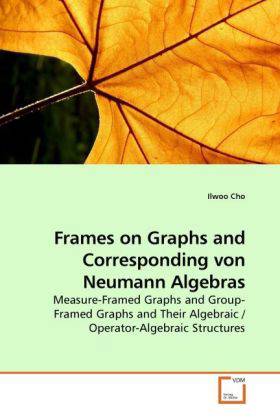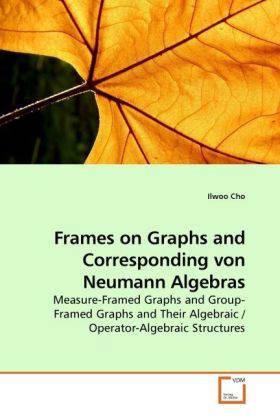
- Afhalen na 1 uur in een winkel met voorraad
- Gratis thuislevering in België vanaf € 30
- Ruim aanbod met 7 miljoen producten
- Afhalen na 1 uur in een winkel met voorraad
- Gratis thuislevering in België vanaf € 30
- Ruim aanbod met 7 miljoen producten
Zoeken
€ 48,45
+ 96 punten
Omschrijving
In this monograph, we consider the framing process on given graphs. For a fixed graph, we put a frame on it. Such a frame is determined to be an independent mathematical structure (possibly other than graphs). In particular, we frame a graph with measure spaces and groups. This framing technique can be extendable to frame other mathematical structures; for instance, rings, fields, (topological vector) spaces, operator algebra, or operator spaces, etc. Here, we restrict our interests to the cases where the frames are either measure spaces or groups. In Part 1 through Part 3, we investigate the measure-space framing: Part 1 shows the fundamental properties of the measure- space framing, and Part 2 provides the biggest application for the measure-space framing; the free stochastic integration. Part 3 is the extension of Part 1 to the groupoid dynamical systems. In Part 4, we concentrate on the group-framing on graphs. The basic properties are studied. As application, we briefly mention about free-group-framing, and distorted histories.
Specificaties
Betrokkenen
- Auteur(s):
- Uitgeverij:
Inhoud
- Aantal bladzijden:
- 84
- Taal:
- Engels
Eigenschappen
- Productcode (EAN):
- 9783639240207
- Verschijningsdatum:
- 26/02/2010
- Uitvoering:
- Paperback
- Formaat:
- Trade paperback (VS)
- Afmetingen:
- 152 mm x 229 mm
- Gewicht:
- 136 g

Alleen bij Standaard Boekhandel
+ 96 punten op je klantenkaart van Standaard Boekhandel
Beoordelingen
We publiceren alleen reviews die voldoen aan de voorwaarden voor reviews. Bekijk onze voorwaarden voor reviews.











